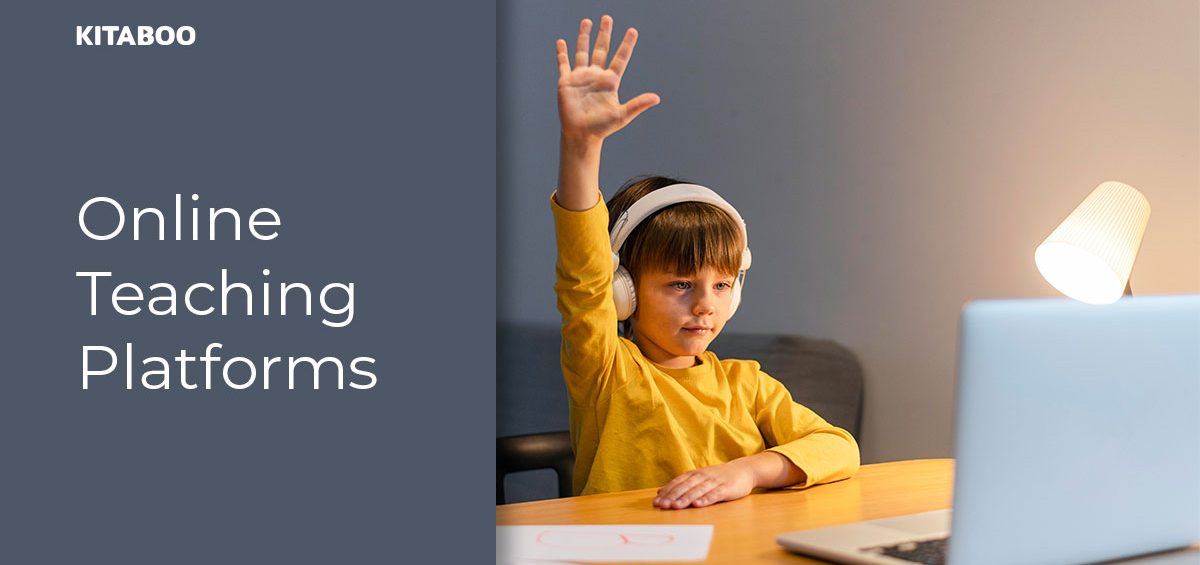Contemporary education has undergone a massive digital transformation in the last few years. The shift to digital content was accelerated by the arrival of the pandemic of 2020 when students were forced to attend online classes overnight.
Most schools offering K12 education were unprepared for this new format of education. They struggled with the lack of digitized content. They also did not have a unified platform that helped them deliver high-quality online learning to students.
Today, more and more students have become comfortable with accessing digital textbooks. Schools are also adopting online teaching platforms, enabling them to digitize all existing content and disseminate them to students seamlessly.
Digitization Triggered by Learning Losses
K12 students experienced a massive amount of learning losses due to the chaos of the pandemic. Despite the advancement of educational technology, the K12 system was still engaged with physical textbooks and classroom lectures.
However, recent scenarios have pushed some schools and education providers to open- up 100% virtual learning environments.
Several K12 organizations, including schools, tutoring companies, and private education providers, are now digitizing K12 content to make it more accessible to students. For instance, content from traditional textbooks is being converted into eBooks.
Advantages of Digitizing K12 Content
Here’s a snapshot of the key motivating factors leading K12 organizations to digitize their content and adopt online learning platforms.
Access All Content on One Device
Physical textbooks take up space in one’s bag as well as on the shelves. On the other hand, digitized content is stored on the cloud or one’s device.
One can access thousands of eBook titles in a hassle-free convenient manner. There are no storage problems nor issues such as damaged textbooks.
With newer generations of students being comfortable with technology and devices, the adoption of digital content has been swift. Hence, K12 organizations are looking to keep pace with these consumption habits.
Multiple Engaging Formats
Not all students learn in the same way. However, traditional school education best suits those who respond to the classroom-lecture methodology.
On the other hand, digital content enables students to learn in different ways. For instance, some students respond to visual stimuli, while others with visual challenges can learn through sound.
K12 organizations can also easily convert PDFs into the epub3 format, which introduces several engaging forms of content into the eBook. These include videos, podcasts, infographics, and assessments.
Students can also make other adjustments based on their needs. They can highlight passages and bookmark pages, leverage the search option to find content, and adjust the font size quickly.
They can also add side notes and color-code these notes.
Bringing Interconnectedness into Learning
Textbooks do have a lot of information. However, the world is changing so quickly that students need to stay connected with the outside world to keep pace with the latest developments.
Unlike physical textbooks, eBooks enable hyperlinks to external sources. This can include outside websites, blogs, videos, and other types of supportive content.
This reduces the amount of time that students need to spend using search engines. At the same time, they can return to the eBook and continue their studies.
Presentation in Bite-Sized Nuggets
Learning on Demand
Learners everywhere today have access to smartphones. Learning patterns have also evolved. Learners want to access on-demand learning resources just as they access social media or any other online platform.
K12 organizations can capitalize on this shift in consumption by making high-quality digital resources and online teaching platforms available for their earners. They can also leverage online content distribution platforms to disseminate these resources in a streamlined manner, as they are of a high-quality unified viewing experience.
An Affordable Alternative
Physical textbooks come at a substantial cost. In the future, the cost of physical textbooks is expected to grow even more as publishing houses struggle to sustain their physical textbook businesses.
Today, students prefer to buy eBooks or rent them for a specific period based on their learning needs. K12 publishers are also looking to leverage eBooks as these technological advances enable digital rights management. This feature allows publishers to retain revenue and track the online usage of eBooks.
Digital Content Encourages Collaboration
Another unique feature of digital content is that it enables learners to work as a team on projects. A large number of digital reading devices come with sharing features.
Hence, if students are reading a particular book, they can also share their notes with classmates and teachers.
The sharing feature also enables teachers and facilitators to leave instructions in feedback for learners. This feature makes learning more engaging. It enables learners to develop collaborative skills, which will be a key skill required by students as they enter the workforce.
Data on Learning Habits
Another reason why K12 organizations are gravitating towards online teaching platforms & digital content is the fact that they can track consumption patterns through data analytics.
For instance, if a teacher shares a new video, they receive data such as how many learners have watched it. They can also track popular content, content that does not receive any traffic, as well as timings with the highest traffic.
Conclusion
According to Markets And Markets, by 2026 the digital education market is projected to reach $46.7 billion, with a compound annual growth rate of 32.3 %. As more learners adopt learning through digital content, K12 organizations also aspire to digitize their content.
Today, many tech-enabled solutions are available to help make the process more streamlined and produce a high-quality output.
Digital solution platforms such as KITABOO empower K12 content publishers and educators to create and disseminate digital textbooks seamlessly. Using a single unified platform, K12 organizations can also convert eBooks from PDF to ePUB3 seamlessly.
Leveraging such platforms helps K12 organizations bring scale and efficiency to their digital transformation journeys and be market leaders in their domains.
To know more, write to us at KITABOO@hurix.com.
Discover How An Ebook Conversion, Publishing & Distribution Platform Can Help You
Kitaboo is a cloud-based content platform to create-publish & securely distribute interactive mobile-ready ebooks.
You May Also Like








